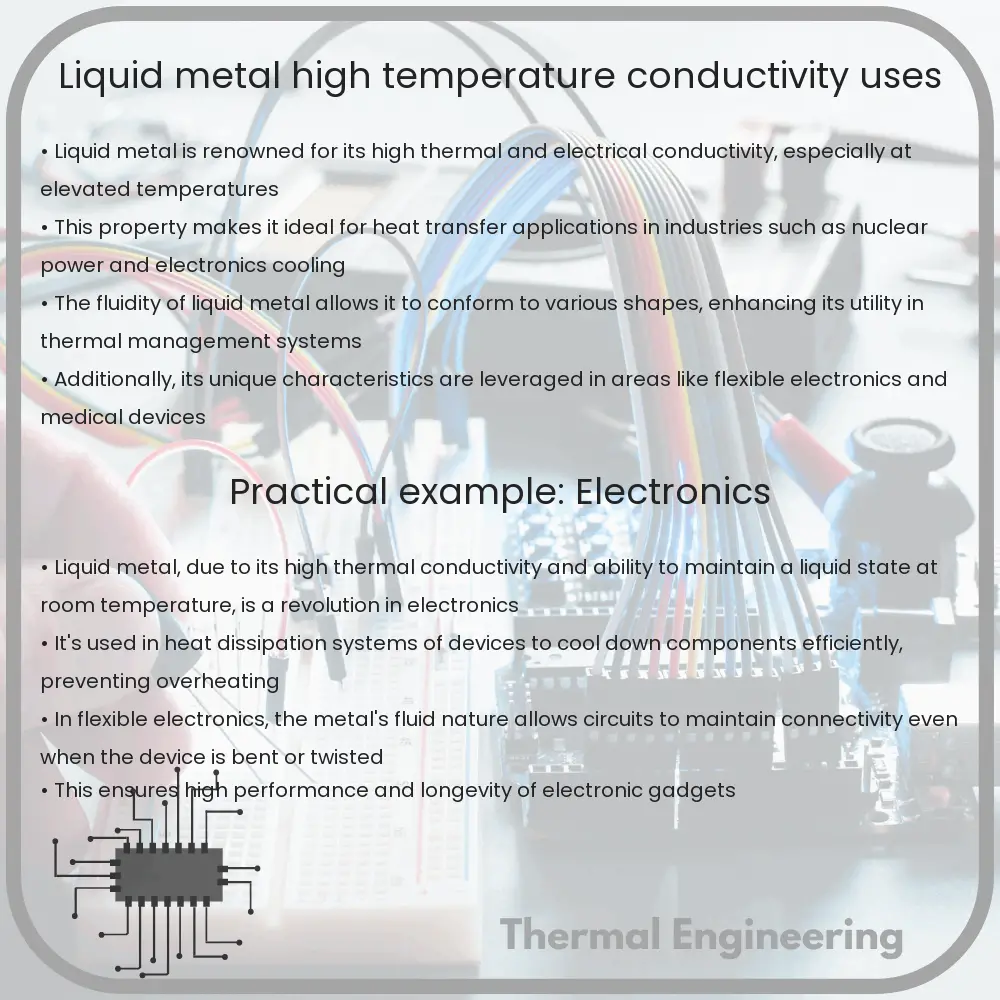Learn about liquid metals, their high temperature conductivity, and diverse applications in technology and engineering.

Understanding Liquid Metal: High Temperature Conductivity & Uses
Liquid metal refers to metallic alloys or pure metals that are in the liquid state at relatively low temperatures. These substances have remarkable properties, primarily their high thermal and electrical conductivity and the ability to maintain liquid phase over a broad temperature range. Among the most well-known liquid metals are gallium-based alloys, which remain liquid at temperatures close to room temperature.
High Temperature Conductivity of Liquid Metals
The electrical and thermal conductivity of liquid metals are key characteristics that define their applications and performance. Electrical conductivity refers to a material’s ability to conduct electric current, while thermal conductivity refers to its ability to conduct heat.
At high temperatures, the atoms in liquid metals are more agitated and move freely, which typically increases the scattering of electrons and could lower electrical conductivity compared to their solid state. However, liquid metals like mercury, gallium, and eutectic alloys often maintain high electrical conductivity even at elevated temperatures. For instance, the conductivity of liquid gallium at 29.7 °C is approximately 3.46 x 106 S/m (siemens per meter), making it a superb conductor of electricity.
Thermal conductivity in liquid metals is similarly impressive. The random motion of atoms and the dense atomic packing help facilitate the transfer of heat energy. For example, mercury has a thermal conductivity of about 8.3 W/(m*K) (watts per meter-kelvin) at 300 K, demonstrating efficient heat transfer capabilities.
Common Uses of Liquid Metals
- Thermal Interface Materials: Liquid metals are used as thermal interface materials (TIMs) in high-performance computing applications. Their excellent thermal conductivity helps efficiently transfer heat away from components like CPUs and GPUs to cooling devices such as heat sinks.
- Coolants in Nuclear Reactors: Certain liquid metals, like sodium or lead-bismuth eutectic, serve as coolants in fast nuclear reactors. These materials efficiently transfer heat from the reactor core to the heat exchangers without slowing down the neutron speed, critical for the reactor’s operation.
- Flexible Electronics: The liquid state and high conductivity of liquid metals allow them to be used in stretchable and flexible electronic circuits, which can be embedded into wearable technologies.
- Galinstan in Medical Devices: Due to their non-toxic nature, alloys like Galinstan (a gallium-indium-tin alloy) find applications in medical devices such as thermometers, replacing hazardous mercury.
Future Prospects and Challenges
As the demand for advanced cooling methods in electronics and renewable energy systems increases, the role of liquid metals is expected to expand. Researchers are exploring the potential of these substances in areas like solar power generation and electronic skin applications. The main challenges in widespread adoption include managing the corrosive nature of some liquid metals and overcoming the high costs associated with rare material components.
In conclusion, liquid metals, with their high temperature conductivity and versatile applications, are proving to be extremely significant in both traditional and cutting-edge technologies. Their unique properties enable them to play crucial roles in improving the efficiency and capabilities of various engineering systems.